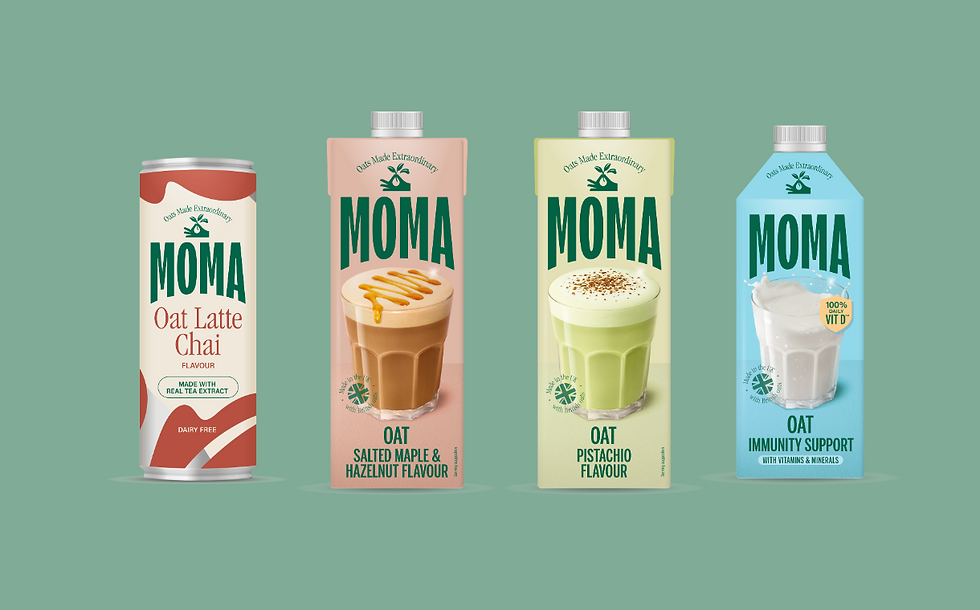The latest news, trends, analysis, interviews and podcasts from the global food and beverage industry
When budgets tighten, consumers don’t always cut out indulgence – they scale it down. This is known as the ‘lipstick effect’, a term coined by Leonard Lauder of Estée Lauder, where shoppers trade big-ticket luxuries for smaller, affordable treats. A similar behaviour is now emerging in food and drink, dubbed ‘foodluxxing’. FoodBev’s Leah Smith explores this trend and what it reveals for brands and retailers seeking to capture accessible indulgence.

What is Foodluxxing?
Foodluxxing describes the consumer tendency to seek affordable yet premium food experiences when larger discretionary spending is out of reach. It’s the £8 artisanal coffee, the £20 craft burger or the indulgence of a premium gin or gelato – rather than a week-long getaway in the sun.
Rather than cutting out indulgence altogether during economic stress, consumers are reframing luxury in smaller, more accessible formats, trading big-ticket items for elevated everyday treats.
“Foodluxxing makes sense when you look at what it gives to people.” clinical psychologist, Dr Daniel Glazer, explained. “When money feels especially tight, most of us still want a small lift we can justify. So we upgrade the little things. An inviting latte. A fresh, glossy market haul. A jar of something artisanal perched on the counter that makes the kitchen feel cared for. It’s the lipstick effect in food form: a treat that lifts mood, signals taste and doesn’t wreck the budget.”

Why it happens
The lipstick effect is grounded in psychology. According to the experts, small luxuries provide:
Emotional comfort: A premium treat can serve as a mood booster, offering a sense of normalcy and pleasure during uncertainty.
Status signalling: Even small indulgences can carry social cachet, especially in a culture where experiences are shared online.
Perceived value: Spending $15 on a gourmet pastry, for example, feels like an accessible luxury compared to a $150 dinner.
“Psychologically, it’s reward seeking and self-soothing with a side of belonging," Glazer added. “It also acts as a micro-affirmation – a small but meaningful cue that life is still in order. The ego gets a small boost, a hint of affordable luxury, and that’s often enough to brighten the day.”
In an era where social media magnifies even the smallest moments, a beautifully plated brunch or a limited-edition dessert can deliver outsized emotional returns for a relatively modest spend.
Dominique Tufa, founder of the Global Makeup Awards, added: “What drives the spend is mostly about control and mood. A premium treat is predictable in the best way. You know how it will arrive, how it will smell, how it will land on the tongue. That small certainty is comforting when larger plans feel shaky.”
Recent trends show foodluxxing across multiple categories, particularly with speciality coffee and elevated takes on nostalgic favourites, from artisanal ice creams to premium versions of staple dishes like truffle mac and cheese. Beverage producers are also tapping into the trend, offering craft sodas and non-alcoholic spirits with upscale branding that creates a sense of premiumisation.
Tufa added: “Foodluxxing mirrors the lipstick effect in three places: it is affordable, it is visible, and it creates a quick emotional lift. It diverges because food is gone as soon as you share it or set down the cup, which invites repeat rituals, and because it lives in public. You can split a dessert or pass a bar of single-origin chocolate around a table, and the pleasure becomes communal in a way makeup rarely is. Wellness also threads through it. People justify a premium smoothie as nourishment and a premium truffle as a celebration, and both stories can be true.”

What it means for the industry
For operators and brands, foodluxxing presents both a challenge and an opportunity. One major trend in F&B is storytelling, with consumers increasingly drawn to products that feel authentic and have a narrative behind them. Foodluxxing allows brands to lean into this, positioning smaller indulgences as treats worth savouring and justifying the premium through stories of provenance, craftsmanship or unique production methods.
Psychotherapist Eloise Skinner explained: “Storytelling is a huge aspect of brand development and marketing, and can play an especially important part in psychologically-driven trends such as foodluxxing.”
She continued: “This is because these types of trends have strong emotional and social drivers behind them - instead of being purely about taste and experience, the trends rely on the narrative a consumer tells themselves about the purchase. Storytelling, therefore, is a fundamental component of brand marketing in this particular category.”
Brands can also utilise social media here by making sure it isn’t just the item itself that is a treat, but the packaging as well, allowing for influencers and their followers to inject a little luxury into their feeds.
Ben Black, executive director at Verlinvest, an international investment firm that works with companies like Tony’s Chocolonely, Vita Coco, Oatly and Insomnia Cookies, commented: “We see Foodluxxing as an extension of the attention economy and the rising role of TikTok and social media in driving viral food trend, which is particularly prevalent in times of squeezed consumer incomes, where affordable treats as opposed to big-ticket splurges perform best."
Skinner also believes the role of social media, particularly among Gen-Z consumers, is fundamental in the foodluxxing phenomenon, noting: “Younger generations might see foodluxxing as an opportunity to demonstrate or perform a particular set of social values or participate in a social trend”.

The takeaway
“There is a chance that the trend declines as economic conditions improve - as consumers are able to indulge in more frequent luxuries or bigger purchases, they might fixate less on the purchase of particular food items, or see particular food purchases as carrying less social value," Skinner noted. "However, it is possible that the trend continues to develop, even during the improvement of economic conditions.”
Ultimately, foodluxxing highlights how consumer behaviour is evolving beyond simple price sensitivity. It reflects a broader cultural shift toward mindful, intentional indulgence, where emotional satisfaction, social connection, and sensory experience are as important as cost.
For brands, this means opportunities extend beyond creating a single 'treat' – it’s about designing moments, rituals and experiences that resonate with consumers’ values and lifestyles. By embracing this mindset, the industry can craft products that are not only desirable in the moment but become embedded in everyday life as accessible luxuries worth returning to again and again.
For now, foodluxxing offers more than a trend to watch – it provides a lens into evolving consumer values, where small, thoughtful indulgences carry outsized meaning. Brands that recognise and respond to this shift can create lasting connections, designing experiences that turn everyday treats into memorable moments and build loyalty well beyond the checkout.













.jpg)